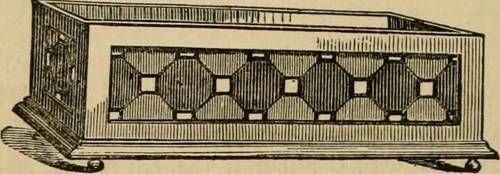
FAQ About Indoor Plant Revival After Long Absence

How can I assess the damage to my indoor plants after a long absence?
To assess the damage to your indoor plants, start by examining the leaves for any discoloration, wilting, or spots, which may indicate disease or nutrient deficiencies. Check the stems for softness or brittleness, a sign of rot or dehydration. Inspect the roots by carefully removing the plant from its pot—healthy roots should be firm and white, while damaged roots are often mushy and brown. By identifying specific issues, you can tailor your revival strategy to your plant's needs.

What are the first steps to take when trying to revive neglected indoor plants?
Begin by removing any dead leaves and stems to encourage new growth. Assess the soil moisture and adjust watering accordingly; if the soil is dry, water gradually to avoid shocking the plant, and if the soil is overly wet, consider repotting in dry soil. Increase exposure to sunlight, but avoid direct sun if the plant is weak. Finally, consider adding a balanced, diluted fertilizer to provide essential nutrients.

How do I know if my plant can be revived or if it is too late?
Plants can often be revived if they still have some green, pliable stems and at least a few healthy roots. If the stems are all brown and brittle or the roots are completely rotten, recovery might not be possible. Look for signs of life such as new shoots or tiny green buds. However, even in severe cases, patient care can sometimes bring a plant back to life.

What common mistakes should I avoid when reviving indoor plants?
Avoid overwatering, which can lead to root rot; instead, ensure the pot has drainage holes and the soil is moist but not waterlogged. Do not place the plant in direct sunlight immediately, as the sudden light can stress it further. Additionally, avoid fertilizing too heavily—use diluted fertilizer to prevent nutrient burn while your plant is recovering.

Why is my indoor plant losing leaves after I returned?
Leaf loss can be caused by several factors including stress from changed conditions such as variations in light, temperature, or water availability. After a prolonged absence, plants may also experience shock due to abrupt adjustments when normal care resumes. Gradually reintroducing consistent care can help stabilize your plant.

Should I repot my indoor plants after neglect?
Repotting may be necessary if the plant has outgrown its current pot or if the soil appears compacted or moldy. Choose a pot slightly larger than the current one to give the roots room to grow and use fresh potting mix to provide adequate nutrients. Be gentle during the process to minimize stress on the plant.

Is it necessary to prune my neglected indoor plants?
Pruning is beneficial as it removes dead or damaged foliage, allowing the plant to focus its energy on healthy growth. Trim back stems that are leggy or affected by disease, and remove any yellow or brown leaves. This will help stimulate new growth and improve overall plant health.

Can misting help revive indoor plants after neglect?
Misting can aid in increasing humidity around the plant, especially for those that thrive in humid environments. However, it should not replace regular watering and should not be overdone on plants that are prone to mold or fungus. Be sure to research the specific needs of your plant species.

How often should I water my plant after a long period of neglect?
Watering frequency should be determined by the plant species and current soil moisture levels. Generally, it's best to water when the top inch of soil feels dry. Avoid watering on a set schedule as this can lead to overwatering or underwatering. Instead, regularly check the soil moisture and adjust accordingly.

Could the type of water affect my plant's revival?
Yes, the type of water can impact plant health. Tap water that is high in chlorine or fluoride may harm some plants over time. Consider using distilled or rainwater for a more gentle alternative. If using tap water, allow it to sit for 24 hours to let any harmful chemicals dissipate before watering your plants.

What role does sunlight play in reviving neglected indoor plants?
Sunlight is crucial for photosynthesis, which provides energy for plant growth. Assess whether your plant’s current location provides enough indirect light; too much direct sunlight can scorch weak plants, while too little will hinder their recovery. Adjust the plant’s position gradually to avoid stress and ensure they receive the appropriate light level.

How can I revive a plant when the soil has dried out completely?
If the soil is completely dry, rehydrating must be done carefully to avoid shocking the plant. Start by giving small amounts of water to moisten the soil gradually. You may need to immerse the pot in a shallow tray of water and allow soaking from the bottom. Once rehydrated, resume a consistent watering schedule.

What signs indicate that a revived plant is recovering well?
Signs of recovery include new leaf growth, stems firming up, and a more vibrant color in the foliage. The plant should also start responding positively to watering and nutrient intake. If these signs are apparent, it usually indicates that the plant is on its way to full health.

Can environmental factors delay the revival of indoor plants?
Yes, factors such as low humidity, inadequate light, and temperature fluctuations can impede recovery. It’s important to create a stable environment that's suited to the specific needs of your plant species. Adjusting these conditions will support its rehabilitation process.

Should I use fertilizer immediately on a neglected plant?
Fertilizer can be used to aid recovery but should be diluted to avoid overwhelming the plant, especially if it is still weak. Wait a few weeks after resuming regular care before applying fertilizer, and choose a balanced formula suitable for general use.

Why are my plant’s leaves turning yellow after I started taking care of it again?
Yellowing leaves can occur due to overwatering, nutrient deficiencies, or sudden environmental changes. Check your watering habits to ensure you are not drowning the roots, and consider whether the plant needs more nutrients or gradual acclimatization to its changing conditions.

How can I prevent my indoor plants from deteriorating in the future during my absence?
Plan for vacations or absences by setting up drip irrigation, using self-watering pots, or seeking help from a friend or plant-sitting service. Grouping plants together can also help maintain humidity levels, as they create a microenvironment that retains moisture better.

Are there specific plant species that are easier to revive than others?
Some species, such as the snake plant, pothos, and spider plant, are known for their resilience and ability to recover from neglect. These plants typically require less frequent watering and can handle a variety of light conditions, making them more forgiving choices for indoor settings.

How long does it take to revive a neglected plant?
The time frame for revival can vary widely depending on the plant species, the extent of the neglect, and the care strategies used. Generally, it can take a few weeks to a few months to notice significant improvements. Patience and consistent care are key factors in successful plant revival.

What tools or equipment can aid in reviving indoor plants?
Useful tools include a moisture meter to accurately gauge soil water content, pruning shears for removing dead foliage, and a spray bottle for misting. Having a supply of quality potting soil, plant ties for support, and a plant-light app to measure light intensity and consistency can also be beneficial.
